Discover, Share, Collaborate and Innovate
_Interview with Kyu Choi, creative director of PAMS
Kim IlSong (editor-in-chief of TheApro)
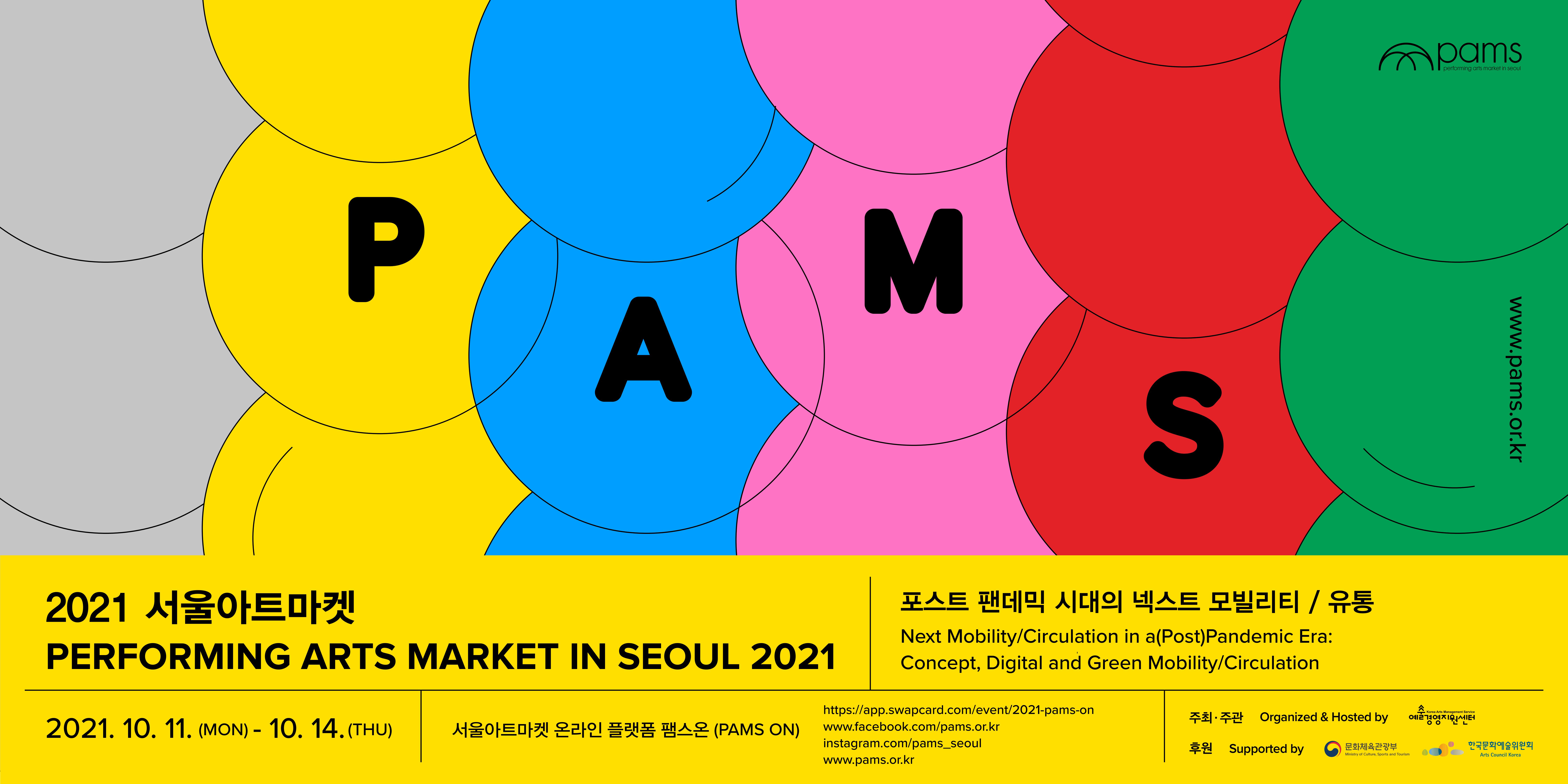
The 2021 Performing Arts Market in Seoul (PAMS) is changing. PAMS is an international performing arts network that was founded in 2005 to invigorate the reasonable distribution and overseas presentation of Korean performing arts. Equipped with diverse programs such as showcases and networking, PAMS has served as a hub of Korean performing arts going global. It has also sought a new direction every time it faced changing trends. But today, PAMS needs a change that would be more drastic than ever before, due to the rapidly changing circumstances, diversification of the global performing arts market, technological progress and above all, the pandemic that broke out in 2020. To respond to such requests of the era, PAMS is changing. Mr. Kyu Choi, creative director of PAMS, tells us about its new direction.
PAMS has changed rapidly since last year. Before explaining the new direction of the change, could you please tell us about the circumstances that have led you to pursue such a transition?
PAMS was launched in 2005. Compared to that time, the role that is expected for an arts market is very different now. First of all, the international performing arts market has changed. In the early 2000s, Korean performing arts weren’t going global very actively. So back then, PAMS just needed to help Korean performing arts to be presented overseas. But in the middle of the 2000s, festivals and theaters also began to play such a role of a market. In particular, festivals such as SIDanceSeoul International Dance Festival, ASSITEJInternational Association of Theatre for Children and Young People and Asia Pacific Music Meeting came to serve as international exchange platforms actively. Unfortunately, PAMS did not manage to develop organic relationships with these festivals and theaters. On the global front, the arts from Asia’s Chinese-speaking countries including Taiwan, Hong Kong and China accelerated the competition in the international performing arts market. Most importantly, a greater variety of international mobility options came in. In the past, the overseas distribution of performances was focused on touring. But from then on, performances came to be distributed also through co-production, residencies and research labs. This leads us to reconsider the diversification of overseas distribution and international mobility as well as multifaceted strategies.
On the internal front, PAMS went through a change in its status at the Korea Arts Management Service (KAMS). At the beginning, KAMS’ programs were centered around PAMS. But as PAMS developed, it was divided into different projects such as the Center Stage Korea and Journey to Korean Music. Later on, KAMS also came to support the visual arts and social enterprises and to manage a comprehensive information network. In this process, KAMS added different teams. In addition, some of KAMS’ programs were transferred to the Korean Foundation for International Cultural Exchange (KOFICE). So overall, projects were diversified but the organic relationship and collaboration between KAMS and PAMS have loosened. Consequently, the importance and role of PAMS seem to be smaller than before. To summarize, the circumstances that have led PAMS to change include changes in the Korean and international performing arts market and structural changes inside KAMS.
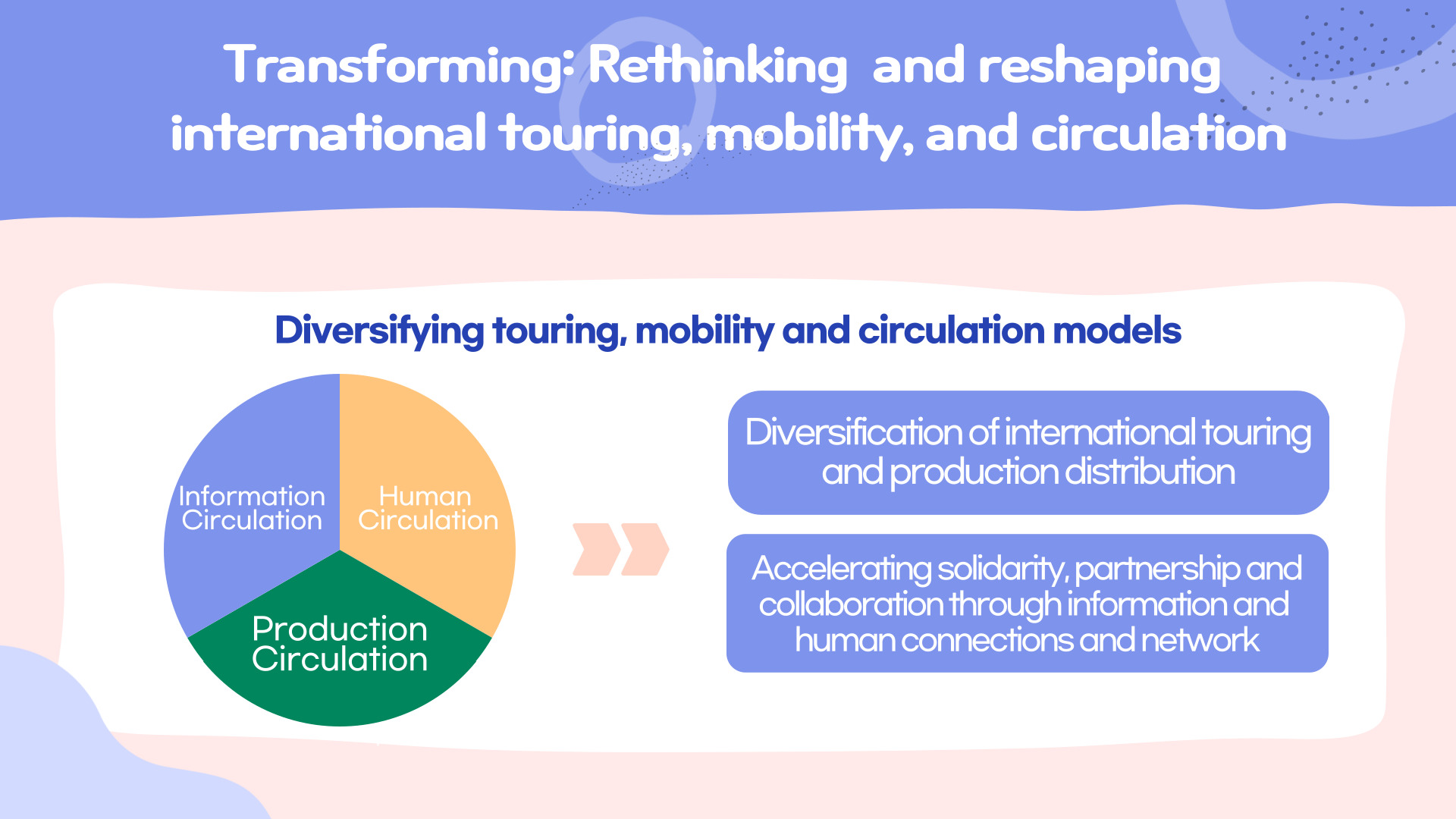
What matters seems to be how to change.
past several months. The theme of the workshop was “What should be the focus of changes in PAMS as an international performing arts platform or network that prepares for the post-pandemic era?” What was important was to redefine concepts such as “overseas presentation” and “distribution.” In the past, distribution was usually carried out through the “touring of performances.” Later on, performances came to be distributed in new ways such as co-production and residencies. So our first mission was to restructure and diversify the concept of “distribution/circulation.”
In the performing arts, distributing performances as merchandise isn’t the only purpose of distribution. It is also about focusing on those who create the performances: artists, arts companies and producers. Once we focus on the artistic directions, values and different ideas of artists and producers, we can also diversify how to distribute works. For example, we can diversify the forms of directing, choreography, scripts and sound sources. And recently, developing local audiences has become an important issue. So we could also consider “concept touring” which is about making a performance with the local audience on the basis of the creator’s concept. In the case of outstanding concepts, we could even distribute only “thoughts and ideas” without any physical performance. That is why this year’s PAMS Choice also includes works in progress whose ideas are great. Creators are the most important.
Of course, things won’t change all at once. But I believe that artists’ diverse forms of mobility will enable more circulation. The mobility of people, ideas and concepts will increase instead of physical mobility. Distribution/circulation should remain fluid for that to happen.
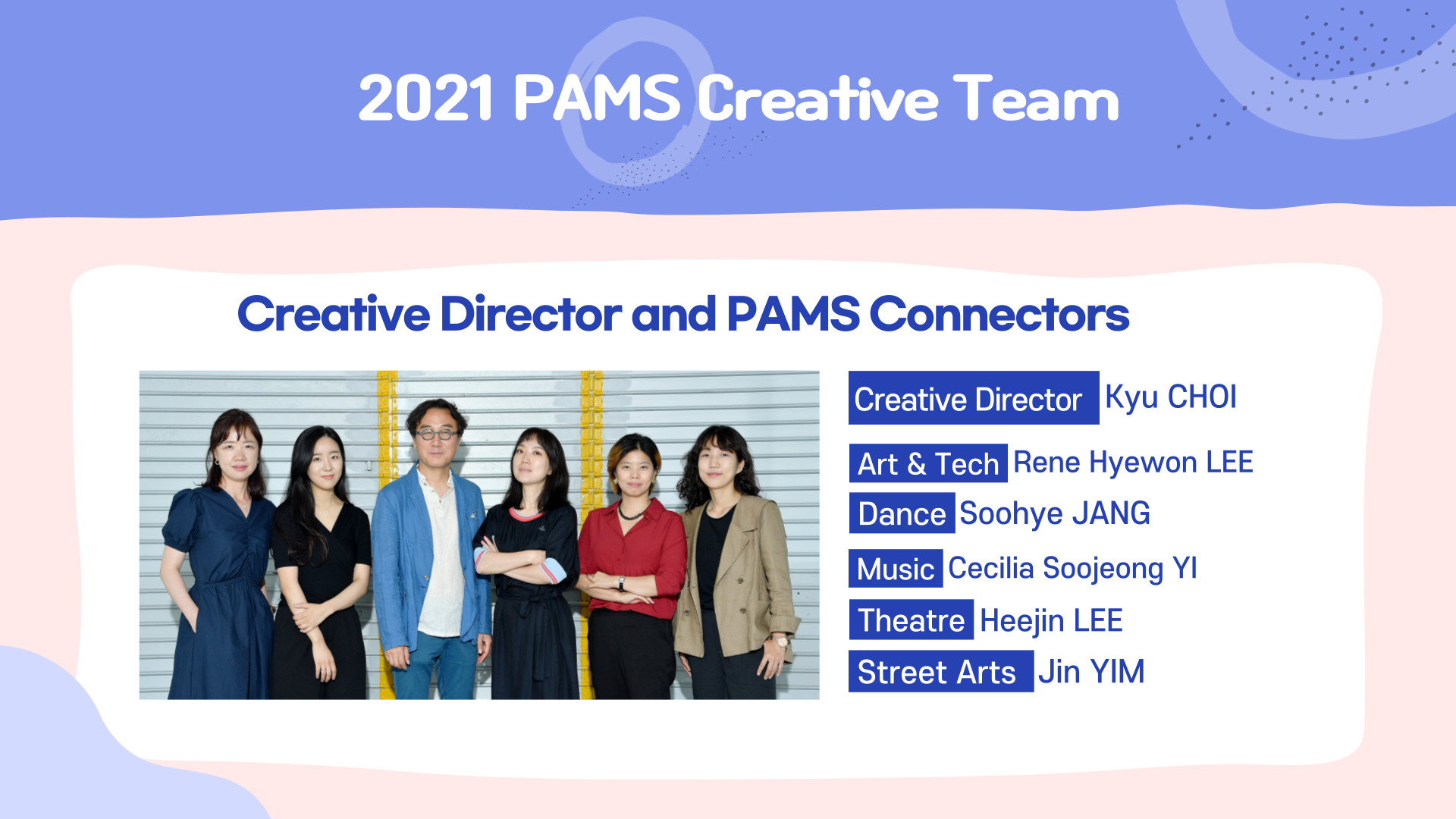
That’s a great initiative. But it doesn’t look very easy to distribute works whose final results are unpredictable.
Diversification of distribution methods requires careful matching and strategic care. So we need experts. But KAMS currently has experts in administration and management and it is difficult for the organization to ensure professionalism from the performing arts scene. That is why we have brought experts from outside to work as Creative Director, PAMS connectors, etc. and design a strategic system that connects the local scene to partners from home and abroad. So our first task is to establish this dual system of internal and external human resources.
And next, the organic relationship inside KAMS is also important. Running several programs, which differentiate from others, is something positive. The KAMS Connection is in charge of research. PAMS is a platform. SPAFSeoul Performing Arts Festival meets audiences. The Center Stage Korea and Journey to Korean Music focus on distribution. In this regard, our second task is to link such different programs in a more systematic way. Then we could do research to produce performances and enable their touring.
However, internal change isn’t all we need. We desperately need partnerships in order to form solidarity and collaborate with outside organizations. So we have also built a network governance structure by establishing organic relationships with relevant organizations in Korea. These organizations include festivals of different genres, theaters, creation centers and the Haevichi market(National performing arts market). We have also formed international partnerships focused on genres, themes and productions. For example, we have strategic partnerships with BIPAMBangkok International Performing Arts Meeting, YPAMPerforming Arts Meeting in Yokohama and APAMAustralian Performing Arts Market.
But above all, circulation of information and human resources is important. We need partnerships focused on capacity-building so that we can find partners while we make discourses and discuss new international issues. Currently, Asian, European and North American markets are important but African, Middle Eastern and South American markets, which are not in our mobility/circulation structure, also have potential in a different way. So our goal is to find new partners and develop relationships with them. It is important to professionalize our organization, change our distribution structure and adjust the structure of collaborative governance partnership.
It seems that your organization has gone through changes not just in its physical structure but also in its time frame. That is, the annual structure of PAMS is now divided into PAMS, PAMS ON and PAMS Season.
The biggest change is the seasonal program. In the past, PAMS selected Korean performing artists on the basis of how easy it would be to present their performances abroad. Therefore, only a limited number of groups from not very diverse backgrounds was selected. In other words, we focused on well-known artists. But it has been difficult to share today’s contemporary performing arts in Korea which has grown in a diverse and dynamic way. So we came up with the PAMS Season in an attempt to share the present and contemporariness of the Korean performing arts.
Every time it is held, the PAMS Season focuses on one specific genre or theme. Next year, we will begin with dance. We will introduce not only thematic performances but also different Korean dance scenes and artists. For this, we have formed core partnerships with the Seoul International Dance Festival (SIDance), Busan International Dance Market (BIDAM), Seoul Dance Center and Korea National Contemporary Dance Company as well as international partnerships. For instance, we will introduce different artists according to themes such as “Art and Tech,” “Dance and Society” and “Emerging Choreographers of Creative Dance.” We will also invite international dance experts to help them discover the diversity, dynamism and present of the Korean performing arts.
PAMS has always taken place every October, once a year. But after the event, it seemed that everything had been shut down. So it wasn’t easy to maintain an organic relationship with creators and presenters. That is why we added PAMS ON. It is an online space where participants discuss contemporary topics and main issues. We meet every month at the Air Meet to talk about artists’ concerns. They can also introduce their works, network with others and have conferences. It is our goal to run this program throughout the year to keep in touch.
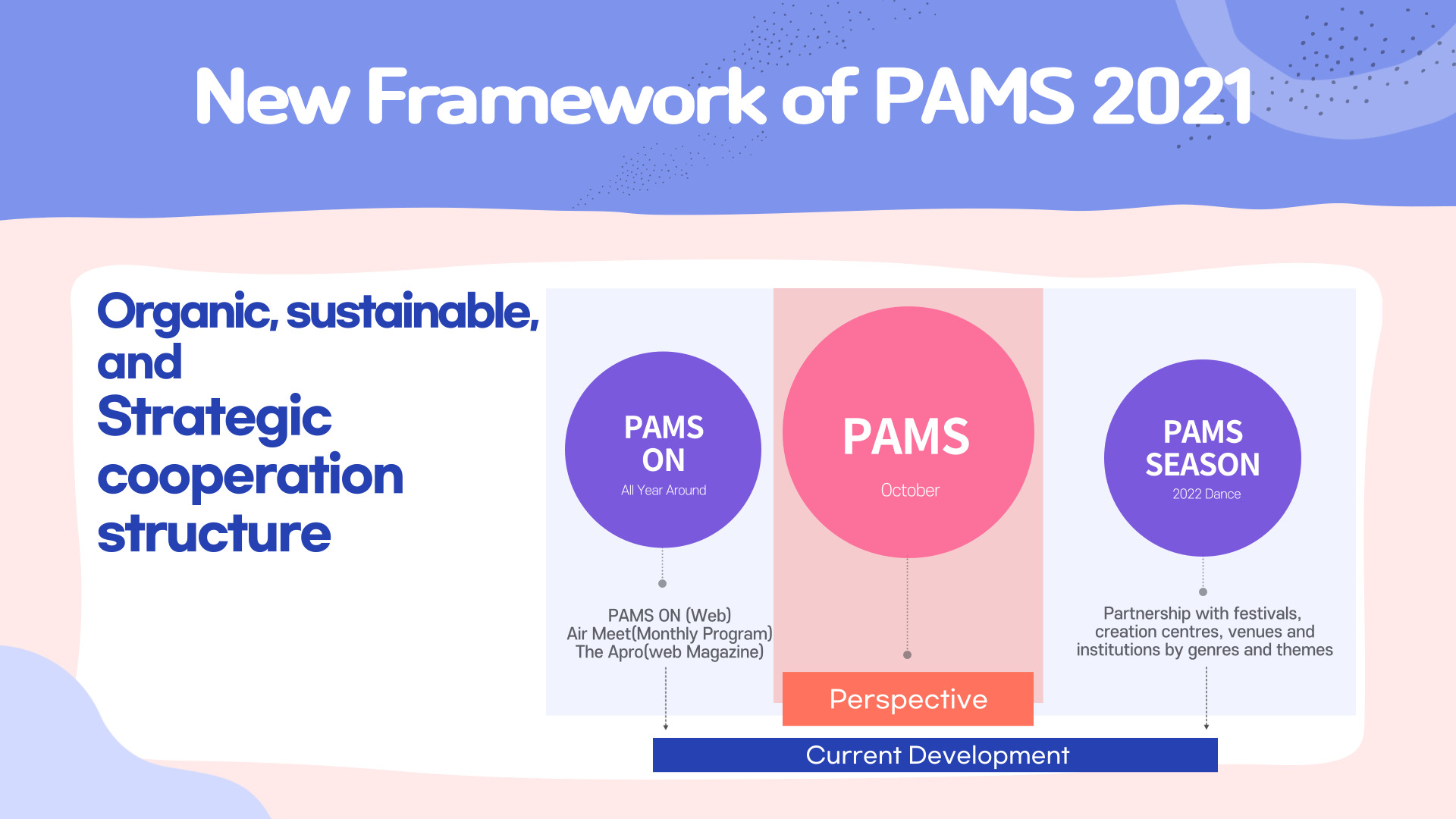
Please provide more details about the four visions or missions of PAMS for this year: discover, share, collaborate and innovate.
First, “discover” is about sharing the present of the Korean performing arts and about discovering contemporary performances attempting new experiments. In the past, most of such works were Korean ones. But from next year, we will widen the scope a little bit to introduce Asian performances. Under the banner of “Shared Asia,” we are willing to serve as a window to Asia. We couldn’t do this alone. As I mentioned when answering your previous question, we need partnerships. We are planning to collaborate with different networks in Asia, North America and Europe in order to create a system where we could share things together and collaborate, where we could share contemporary discourses from different views and perspectives. Such a system of sharing will lay a foundation for international circulation. But here, we have a question. With the pandemic accelerating and uncertainty rising, how should we engage in global distribution? In Europe, artists also participate in addressing climate crisis issues. Like this, in addition to asking questions about international mobility, we need to consider the new consumption patterns of the audiences who have got used to online platforms. Put differently, we need to “innovate” for such a circulation process. Today, creation, distribution and consumption are linked together to be shared online. Under these circumstances, how should we restructure our current platform? This also requires us to adjust our perspective on audiences. What if they don’t come to theaters? What should we do to encourage them to actively participate in online performances instead of passively watching them? To answer this question, we are preparing Next Mobility. This year, we will start by doing research in Korea and next year, we will also offer opportunities of international research, co-creation and co-production.
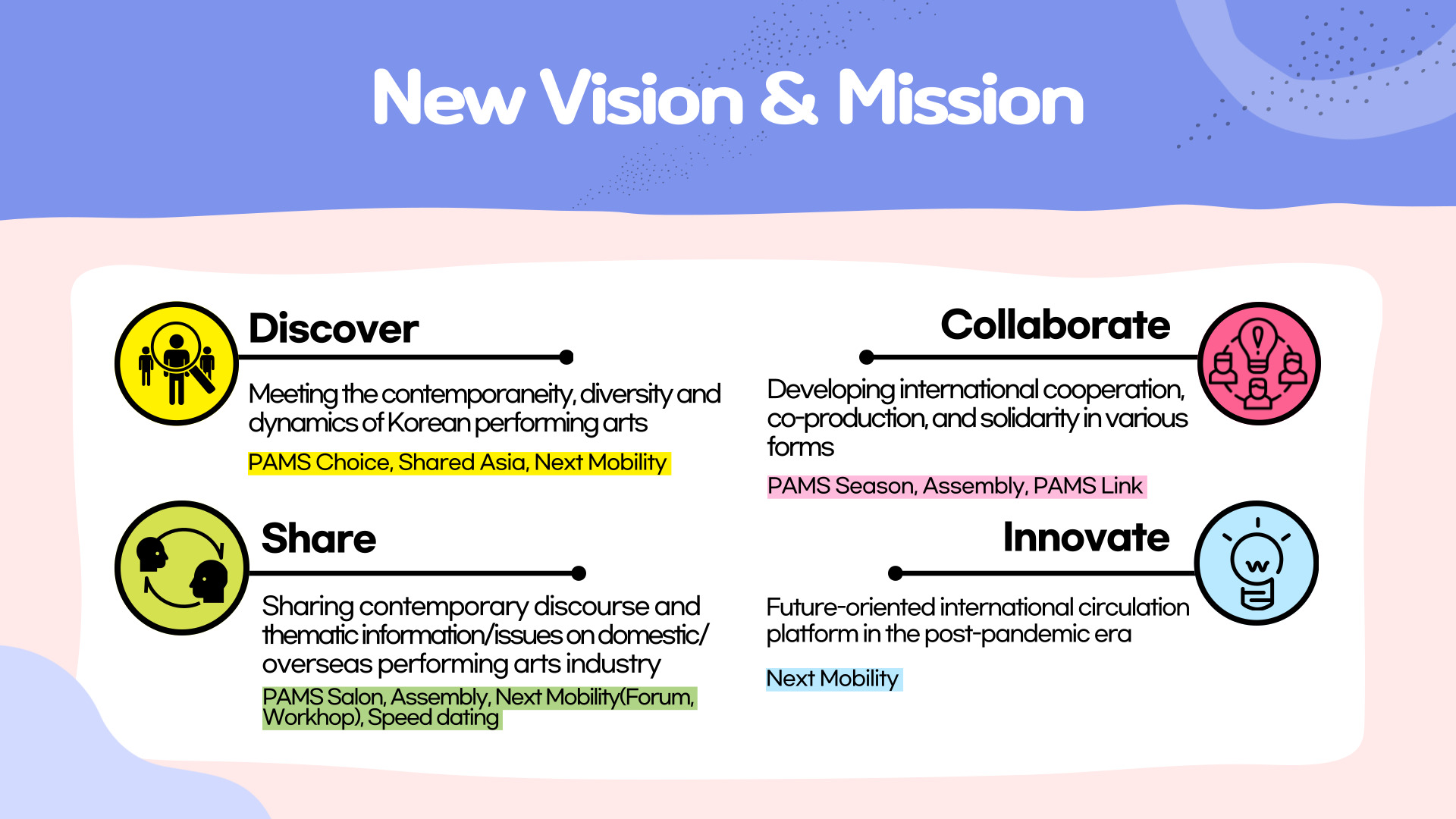
Could you elaborate more on Next Mobility?
Next Mobility began with this question: “What would be the international mobility/circulation in the post-pandemic era of a new normal?” We would like to reflect on the possibility of a new form of production. Let me elaborate on it. Today, technology has become a part of daily life. At the same time, we are facing the climate crisis and limited international mobility. Considering all this, performing artists could make performances in a digital creation space while keeping their physical travel to a minimum or without traveling at all. Or, they could move their ideas through the digital space so that they could make performances with international artists and their local audiences. We are considering such possibilities. As for how to experience performances, audiences used to watch them in person but today, we could consider different methods including the virtual one. This year’s participants are nine teams sharing these ideas. We selected them through an open call with five researchers. We meet with them twice a month to do research on common themes. For example, we discuss how to measure carbon footprints amid the climate crisis. We also think about how to make production greener. In addition, we have in-depth discussions on different thematic discourses including how to develop online audiences. For today’s young people, digital technology is a part of daily life and their sensibility is different from that of the previous generations. They will experience art physically, virtually and in a physical and virtual hybrid way. That is why we are trying to find something new and expand it. Later on, we will have an occasion to share the results of our research and if necessary, we could also make a toolkit applicable to the arts scene, for the sake of future international mobility. Based on this, we are planning to explore possibilities of international mobility with Korean and international artists.
Do you have anything else to add before wrapping up the interview?
The concept of “market” is now changing.
Conventional touring-focused markets still have their place but it should become a platform of sharing discourses and forming relationships in order to expand. In this way, a market should be able to embrace diverse elements and share diverse values. We must not forget that a market needs the arts, artists and producers at the center of its platform.
In order to respond to the era of a new normal based on its digital environment, we should also categorize intellectual property issues regarding international co-production and digital mobility in a more detailed way. We should also consider different forms of online distribution platforms. Furthermore, when people’s thoughts and ideas get transferred (internationally), ethical issues are likely to arise. During actual productions, we face situations in which Korean and European ethical standards aren’t the same. There are differences in people’s ideas and cultures. So their cultural interpretation is often very different. Therefore, in international collaboration and co-production, we will need those who could deal with the following issues: identities that should be kept and elements that could be re-interpreted. Our immediate task is to organize this year’s PAMS well as a step to prepare for the next year. After the event, we will urgently need to ensure the sustainability of such changes.








 PREV
PREV
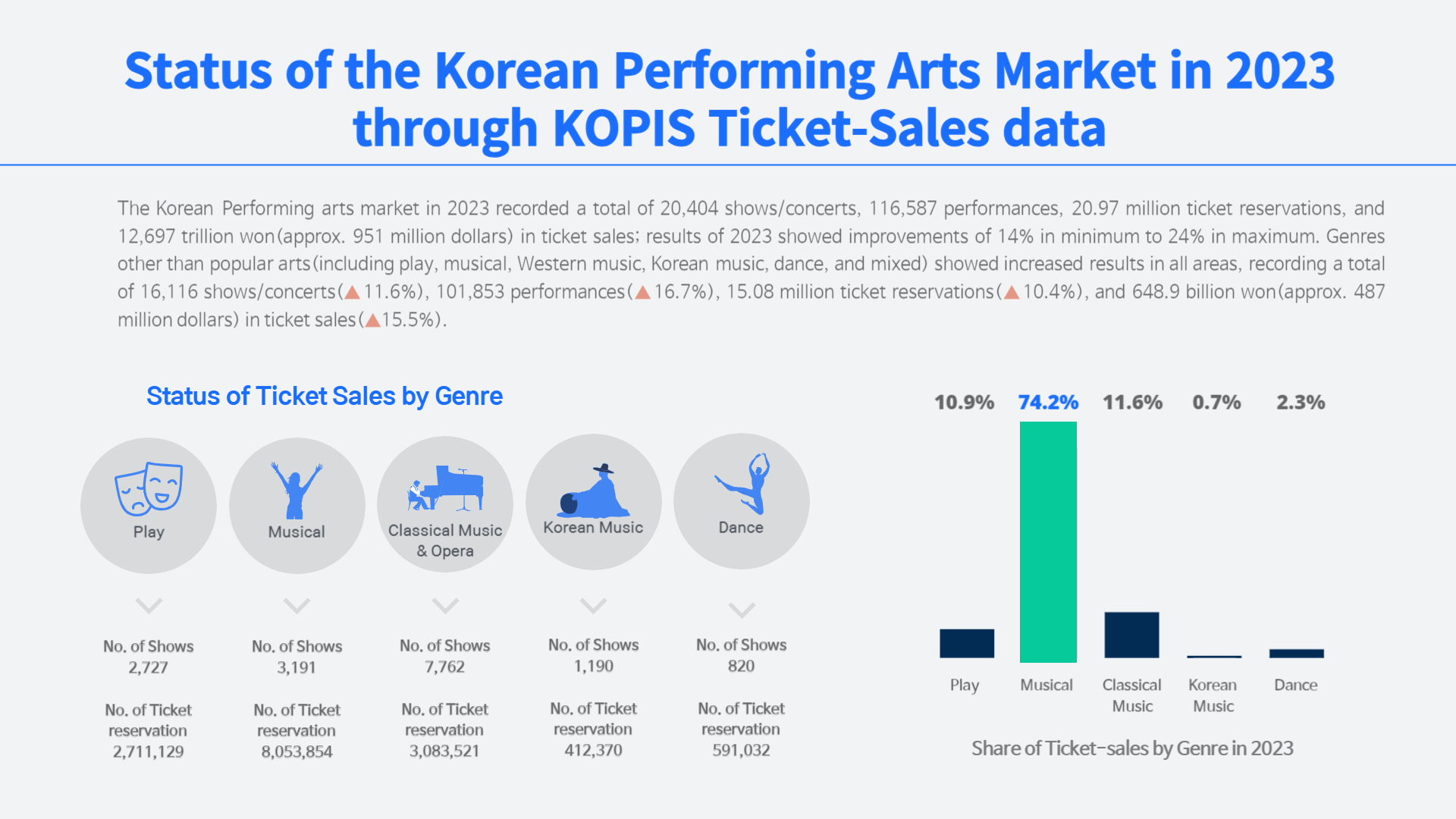
.jpg)
.jpg)
.jpg)
.jpg)











